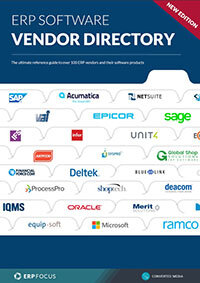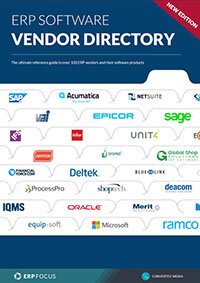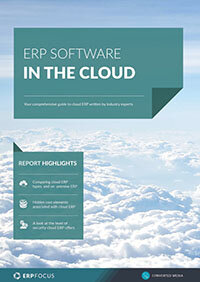Has your ERP vendor gone out of business? Here's what to do
There aren’t many things worse for an enterprise than learning that their ERP vendor has gone upside down. Among the more obvious impacts, operational disruptions immediately come to the fore. Nevertheless, these kinds of business failures occur, so the next question becomes; what do you do to recover?
Well, the ‘best response’ depends on how you employ your particular systems and how your disaster recovery plans are oriented. For example, if you’re operating on-premise, your plan should first target the location, and freshness of your data backups as a precursor to your recovery.
However, if you are operating your business in the cloud, the first thing you should consider is how best to identify, and engage a parallel ERP partner; assuming of course that your virtual datastore is either immediately compliant with the new system, or offers an easily-employed data-migration channel. In either event, you need to depend on previously developed recovery plans as a working framework; otherwise you run the chance of losing control of the entire translation evolution.
That said; however, let’s take a look at generally administrative setups for both on-premise and cloud-based response processes.
On-premise
- Immediately identify and review backup data. If backups are locally-housed, this should be a relatively quick investigation. However, if your backups are stored elsewhere, you need to pick them up and review them as quickly as possible.
Find replacement ERP providers that hit your key criteria using this free online comparison tool
- Premise-based servers will obviously allow for more direct control, but you should also take time to ensure that all systems are optimized, and ready to behave nominally. The last thing you’ll need will be a need to work multiple fixes in the midst of a full-scale systems migration.
- Review all operator credentials and data authorizations. This is a cautionary task, but complete migrations must be rigidly controlled with an eye toward ensuring that every step is properly secured.
- Data held on-premise offers a clearly security advantage, but again, the efficacy of your backup datastores must come first. In this event apply proper security tests to all data after its uncompressed and ready to integrate.
Cloud
- Immediately contact your cloud provider to ensure that your systems will continue to operate while you work toward identifying a migration target. Your provider should be able to help point you in the right direction.
- Question the need for any additional virtual systems, as part of the target search.
- In the case of item 2, also ensure that any additional costs will apply.
- If you don’t already, ensure that enterprise backup data schedules are reduced to the shortest possible update cycle. 15 minute updating is probably best.
Clearly these four steps barely touch the iceberg you’re about to climb, but they should give you some minimal direction, rather than running around the office with your hair on fire. Again, losing an ERP partner is never an ideal situation, however, you can weather the storm if you maintain your patience and apply a liberal dose of cold-eyed decision-making.
Free white paper

ERP Software Vendor Directory
Put the most comprehensive ERP vendor directory on your desk today

Featured white papers
-

Five common cloud ERP mistakes
Get your comprehensive guide to avoiding the five most common cloud ERP errors
Download -

Related articles
-

Why you shouldn't underestimate cloud ERP consultant costs
Make sure to take the cost of a consultant into account when planning your cloud ERP budget
-

Secret KPI: Why Your ERP Implementation Team Matters More Than Software
Learn how Godlan ensures successful ERP implementation for manufacturers with proven strategies &...
-

Five quick actions to improve internal ERP security
Give your internal ERP security a boost with these quick, actionable tips

